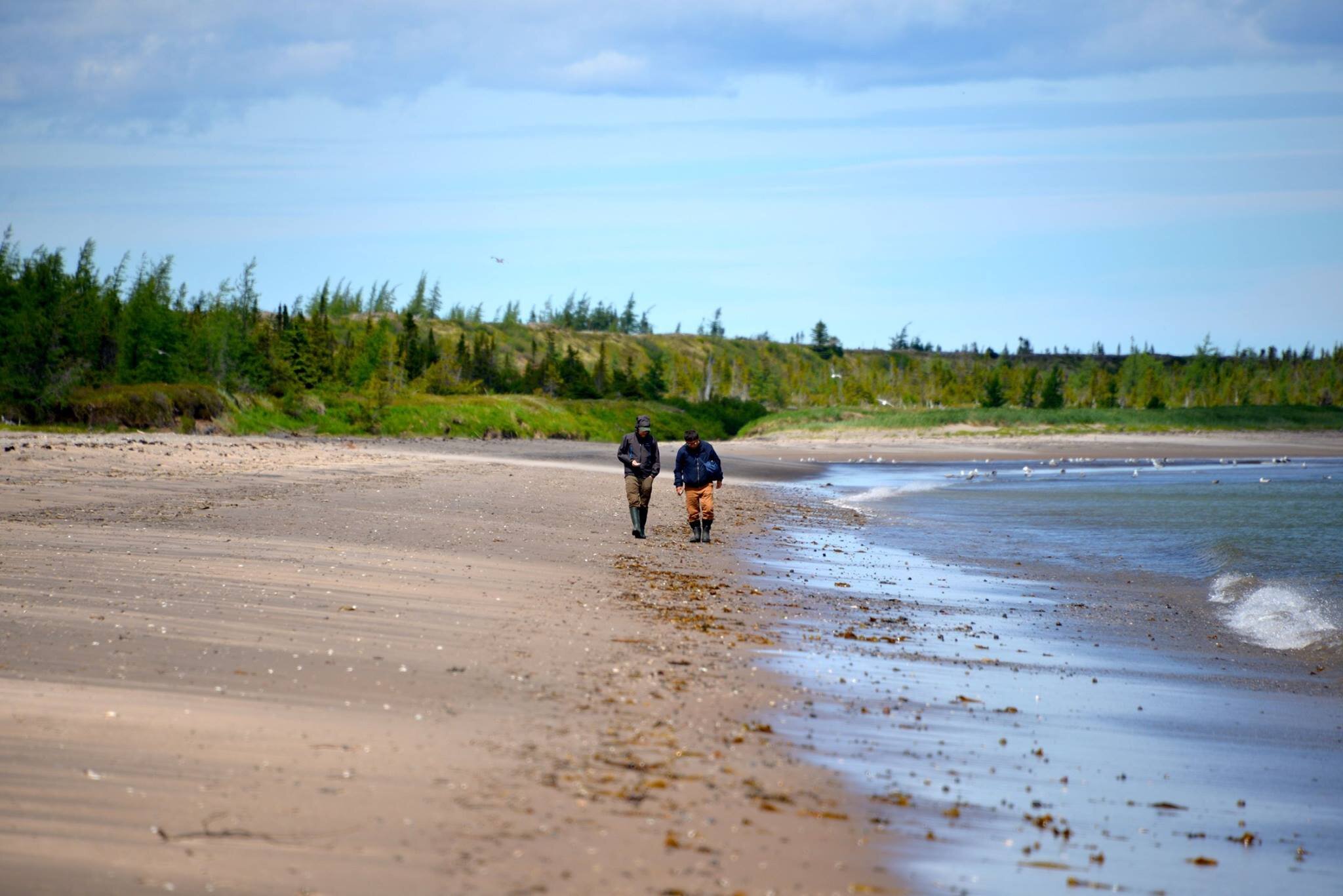
What Guardians Do
Guardians help Indigenous Nations honour our responsibility to care for lands and waters.
We are the “moccasins and mukluks” on the ground for our communities. We manage protected areas, restore animals and plants, test water quality, and monitor development projects. And we welcome visitors to traditional territories and maintain cultural sites.
Guardians’ work is guided by science – both Indigenous and western. We are trained in data collection and water quality analysis, and we learn from our Elders about relationships with animals and changes on the land.
“In this job, you get to work with researchers, get wilderness first aid training, help youth and learn about changes on the land from climate change”
— Robyn Mcleod, Dehcho First Nations
Transformation
Guardians programs transform our people’s lives and communities. Young people grow up knowing they can choose jobs at home, on the land, and connected to culture. Women and men gain professional skills and support their families with good wages. Reconnecting with culture, healing from trauma, retaining language and feeling pride in identity—all of it is rooted in our relationship with the land and our responsibilities to look after it.
“It provides young people with a career in which all the skills that are essential parts of being Innu—our language, our knowledge of the land, our bush skills—are recognized and valued.”
— Anastasia Qupee, Innu Nation
Across the Country
Over 200 First Nations Guardians programs are managing lands, waters and resources right now. Our work is as varied as the terrain. Along the Pacific Coast, guardians help sustain wild salmon runs. In the Mackenzie River Valley, guardians monitor pipeline repairs. In the eastern Manitoba, guardians test water quality around hydro dams. In Labrador, guardians help implement an Indigenous-led plan to restore caribou and monitor some of Canada’s largest mines. And across the country, guardians will have a central role in managing proposed Indigenous Protected and Conserved Areas.
Many more communities are eager to launch guardians programs. They know the enormous contribution guardians will make to the health of communities and the stewardship of lands and waters. Added support means added benefits for us all.
Haida Nation
The Haida Gwaii Watchmen launched the first modern guardians program in the country. Operating since 1981, they patrol the Pacific Coast off Haida Gwaii, monitor fisheries, maintain cultural sites and help the Haida care for the land and sea according to traditional values. They also co-manage the Gwaii Haanas National Park Reserve and Haida Heritage Site. The Watchmen’s stewardship is respected by the community, the tourist industry, fishermen and the Department of Fisheries and Oceans.
Innu Nation
The Minaskuat Kanakuataku guardians in Labrador oversee fisheries, lead forestry planning across 71,000 square kilometres and help manage conservation areas like the Akamiuapishku - KakKasuak - Mealy Mountains National Park Reserve. They also monitor Voisey’s Bay Mine, the largest nickel mine in the world. The program has partnered with scientists, government departments and academics on land-based research projects. It also runs culture camps to bring youth and Elders together on the land.
Dehcho First Nations
Guardians in the Dehcho K’ehodi program care for Dehcho traditional territory along the Mackenzie River. When a pipeline beneath the river recently underwent repairs, guardians monitored the project and ran tests to ensure it did not harm water quality. Dehcho guardians also co-manage the newly established Edéhzhíe Dehcho Protected Area/National Wildlife Area, a sweep of 14,249 square kilometres of boreal forest and clean waters west of Yellowknife.
Meet Indigenous Guardians From Across Canada
Curious what Indigenous Guardians do? Meet the First Nations communities across Canada who are leading the way in conservation by creating guardian programs, and serving as the eyes and ears on the ground. To date, over 200 guardians programs have launched.






